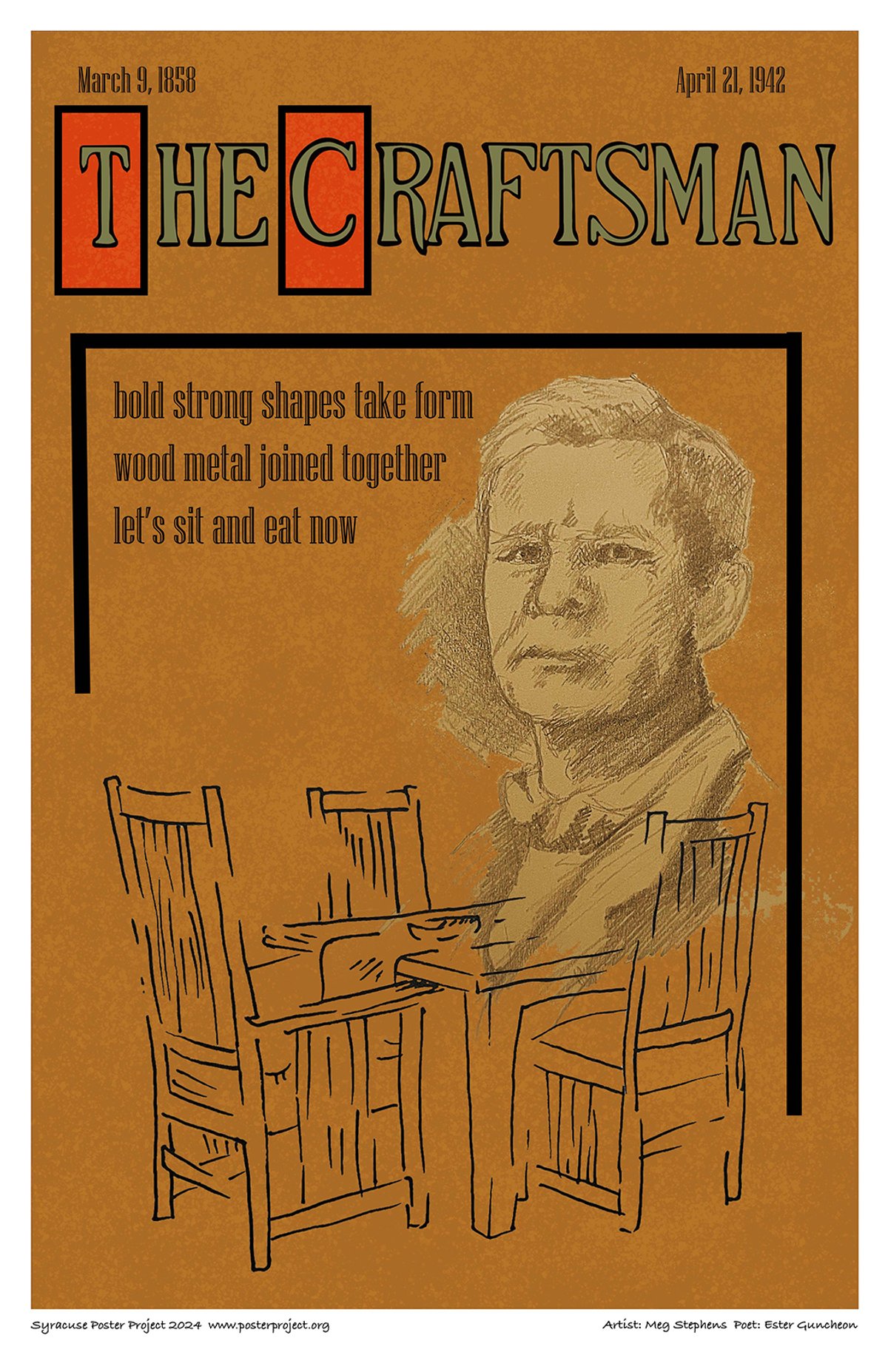Poster Image

Item#: 2024SYR04
Purchase Details
11x17-inches, printed on heavy weight (100-pound) Hammermill cover paper. We package each print with a piece of chipboard in a clear plastic sleeve.
You also receive…
An information page with photos of the artist and poet, and hand-written comments from each.
A framing coupon, good for a 20 percent discount at Edgewood Gallery, a custom frame shop at 216 Tecumseh Rd., Syracuse.
Medium- and large-format posters are available by custom order. Contact us for details.
Poem Inspiration Location
Bold Strong Shapes Take Form
poster information
Description
bold strong shapes take form
wood metal joined together
let's sit and eat now
I was dancing in the stars when I learned my haiku was paired with visual artist Meg Stephens for the Syracuse Poster Project.
To write poetry is joyful and spontaneous for me and ultimately a surprise. I have always adored words—as a child the dictionary and encyclopedia were favorite books filled with delicious exotic treasure—and my father showed me the world of the fantastic and sparked my love of writing, thinking, fun, laughter, and jazz. With this particular haiku, I thought about Gustav Stickley expertly designing and crafting the furniture, then the final destination of the table and chairs as it becomes integrated into someone else's history.
This was one poem my daughter wasn’t able to say, “Oh, another morose poem from….”
Gustav Stickley’s designs found their way into homes throughout Central New York and across the nation. Stickley furniture became a part of many people’s daily lives and was often the gathering center for families.
Another way Stickley’s designs impacted many was through “The Craftsman” magazine and the American arts & crafts design movement. Pulling the fonts, colors, and common layouts from the magazine, I modeled my poster after “The Craftsman.” Instead of issue dates, I placed his birth and death dates at the top, along with his likeness. I added the dining set mentioned in the haiku. I’d like to think that this poster would have been the design used for Gustav Stickley’s memorial issue of “The Craftsman.”

